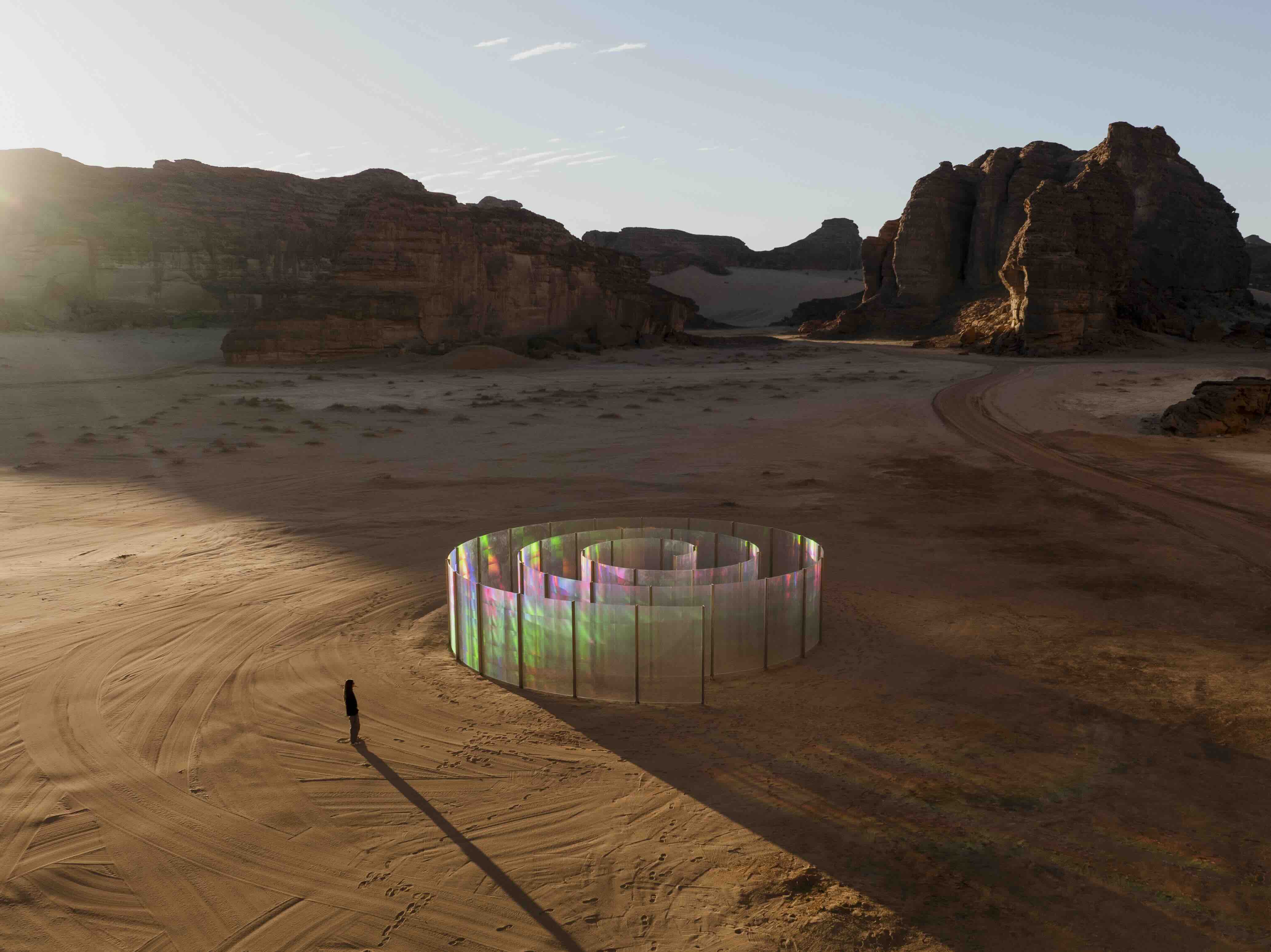The event runs from 9 February to 23 March 2024.
There are plenty of reasons to visit Saudi Arabia’s AlUla, from the UNESCO World Heritage Site to world-class concerts. Now, there’s one more: Desert X AlUla. This event showcases visionary contemporary artworks created by Saudi and international artists amid the extraordinary desert landscape of AlUla.
Returning for its third iteration, Desert X AlUla positions 15 innovative contemporary artworks by both Saudi and international talents, inviting the artists to engage in a discourse with AlUla’s landscape, nature, and heritage, crafting distinctive pieces that emanate from the local context while resonating with global audiences.
Under the thematic theme of “In the Presence of Absence,” Desert X AlUla 2024 prompts exploration into the question: ‘What lies beyond visibility?’ Often perceived as voids, deserts are erroneously deemed silent and motionless. Desert X AlUla’s participating artists have delved deep into this theme, offering fresh perspectives on the unseen facets of the desert landscape, envisioning alternative viewpoints that value the subtle forces and atmospheres of time, wind, light, and the intricate history and myths intertwined within the location.
This year’s edition of Desert X AlUla unfolds across sites within the Wadi AlFann desert, Harrat Uwayrid, and AlManshiyah Railway Station. Visitors are invited to meander through these landscapes, encountering a captivating array of artworks as they traverse between locations. FACT has had a preview of the installations, and here is what you need to see:
Wadi AlFann Desert
Saudi artists Sara Alissa and Nojoud Alsudairi have transformed the desert landscape into a reflective arrangement in Invisible Possibilities: When the Earth Began to Look at Itself. Through diverse viewpoints and approaches, their work seeks to reshape viewers’ perceptions of the site’s ecological transition and its physical landscapes. Resembling a crack in the desert floor, the artwork can be viewed from above or from within.
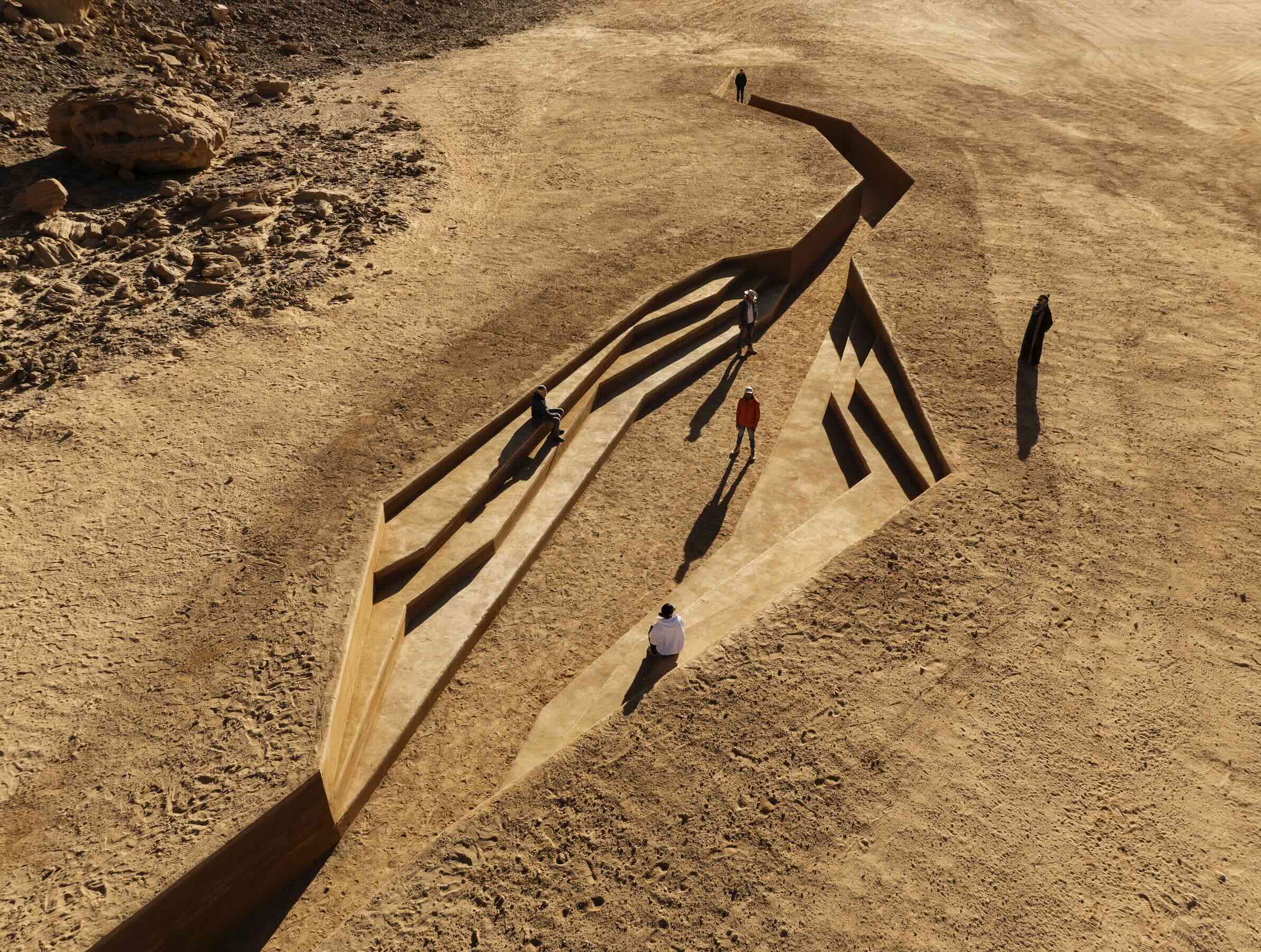
South Korean artist Kimsooja’s work offers a cylindrical form that spirals into the desert landscape. As visitors pass between the iridescent walls of To Breathe – AlUla, refractions of light project rainbows onto the desert floor through walls that distil light which has travelled aeons into prisms that dance across the landscape.
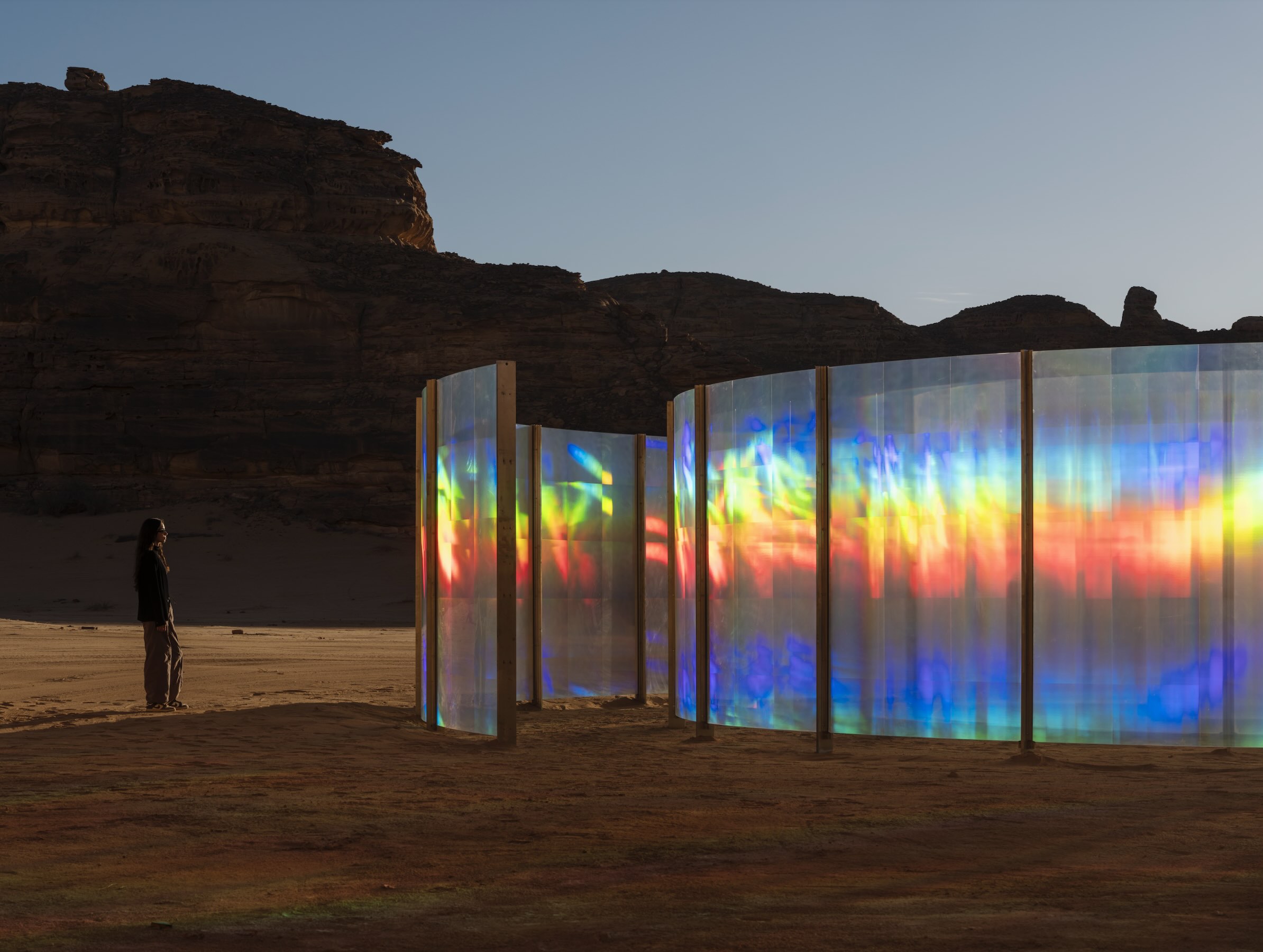
Inspired by AlUla’s historical significance along the Incense Route, Brazilian scent artist Karola Braga employs fragrance to evoke the sensory realm of ancient trade. Her installation, Sfumato, envelops participants in a mist of frankincense and myrrh heated in a volcano-like oven. The exhibit offers visitors an immersive opportunity to rediscover the olfactory heritage of the route as the incense is dispersed throughout the site by the wind.
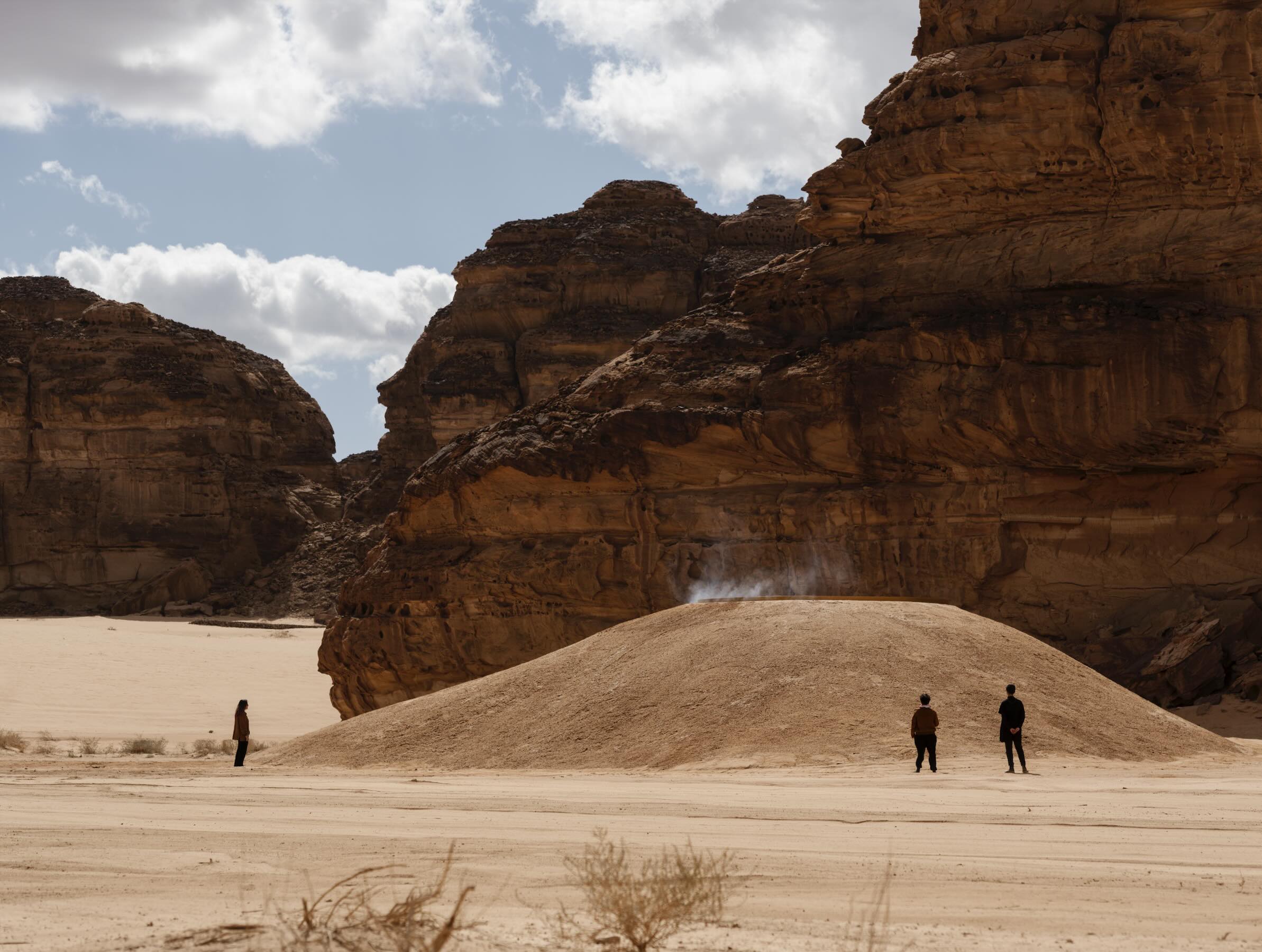
The Dot is Faisal Samra’s tale of construction and destruction. The piece illustrates the genesis of the Wadi AlFann valley from an ancient crack, unveiling the subtle forces that gradually sculpt grandeur over vast epochs. Symbolising the illusion of time, a line comprised of rock fragments serves as a poignant representation leading up to a mirrored sphere that reflects the natural environment in all its glory.
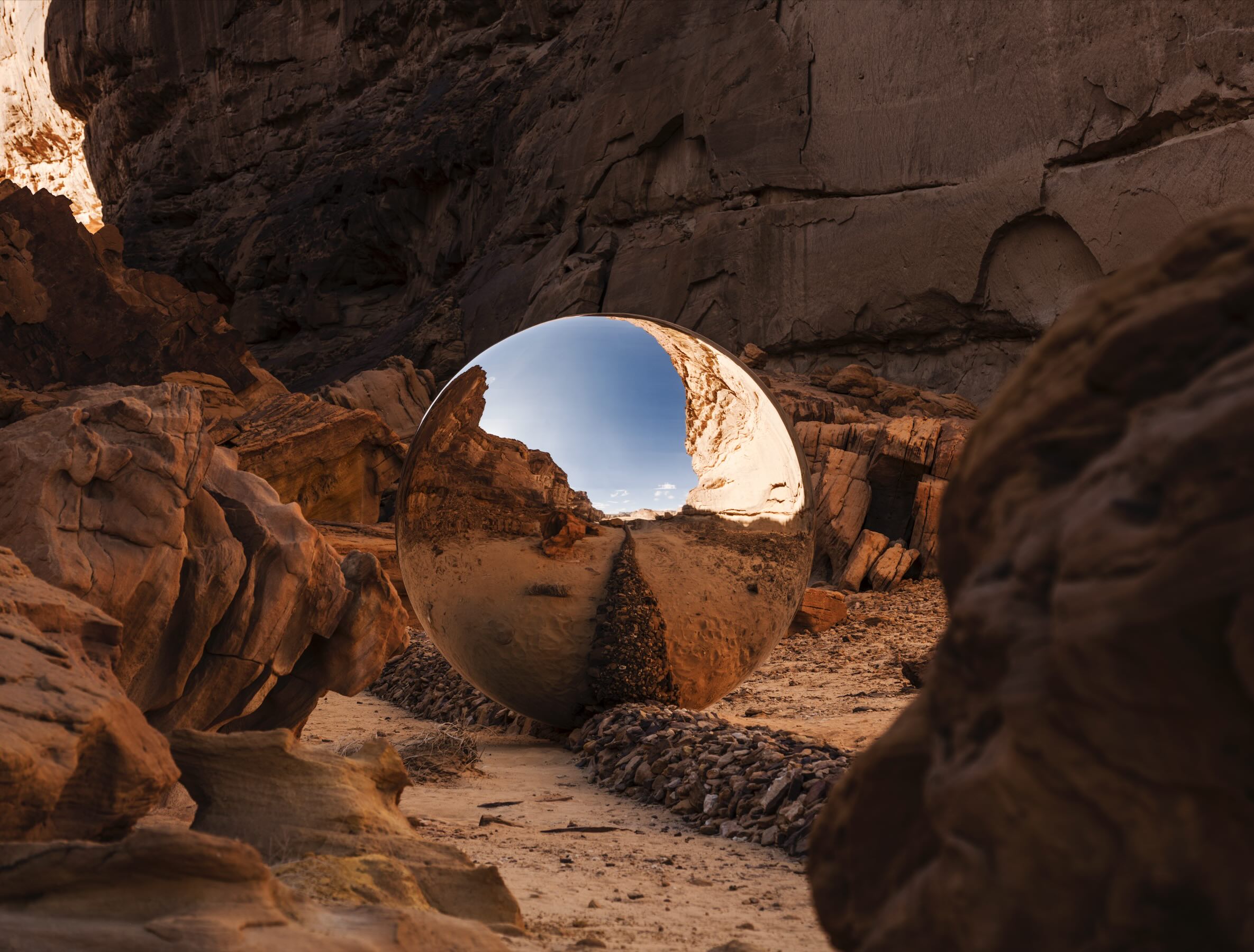
Kuwaiti artist Aseel AlYaqoub’s Weird Life: An Ode to Desert Varnish draws inspiration from the natural phenomenon of ‘desert varnish,’ which spontaneously emerges in landscapes like AlUla’s. This varnish transforms over time into a radiant coating featuring hues of yellow and orange and is inspired by the carved rock faces of AlUla. Constructed from resin, the Dali-esque structure appears to melt into the desert sands.
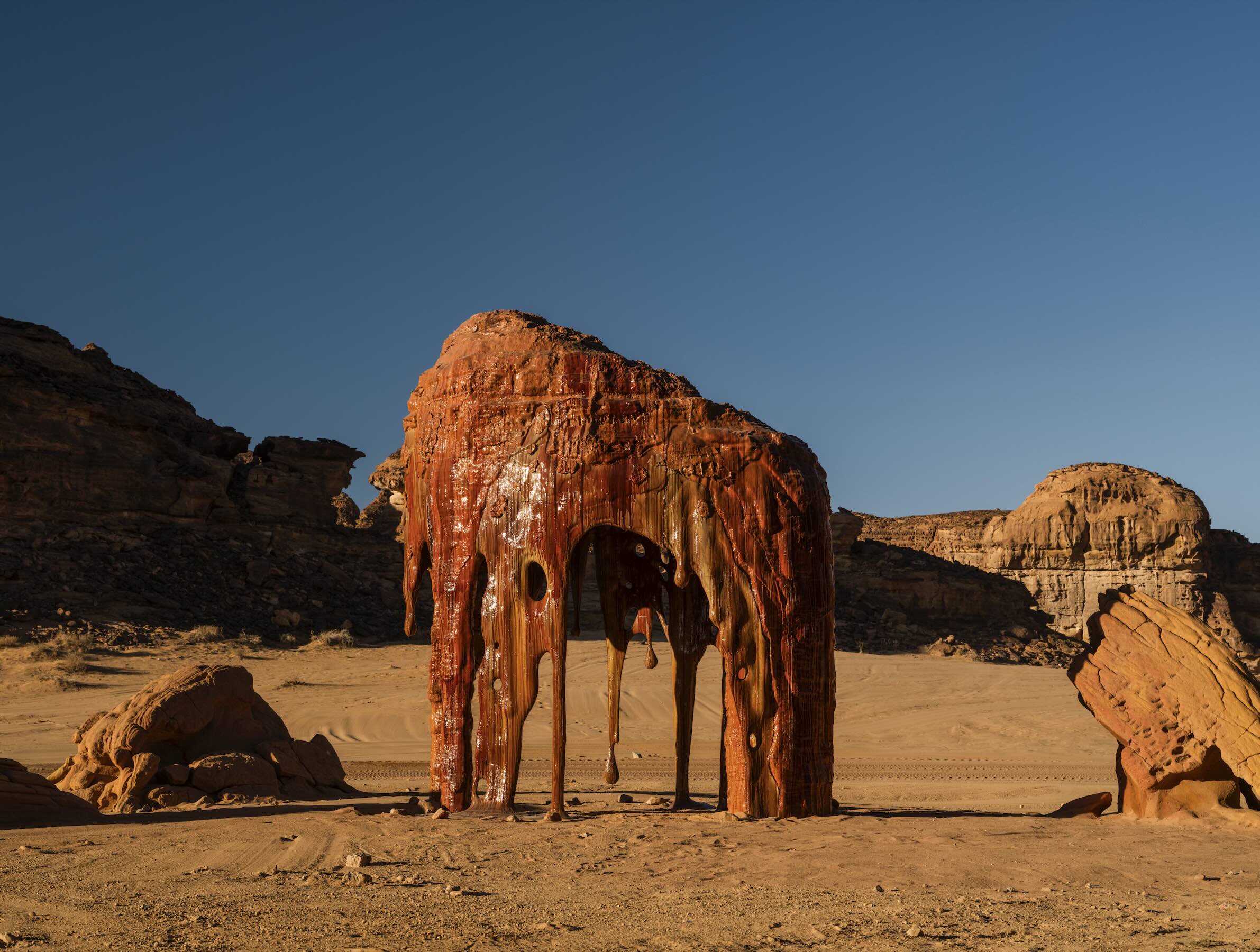
Rana Haddad and Pascal Hachem’s installation celebrates the traditional crafts of the region, constructing a sanctuary from rammed earth jars. Named Reveries, each jar within the tower features geometric incisions, enabling the interplay of nature and light to create dynamic and evolving patterns. These three soaring structures, flanked by rock, can be entered, and when looking up, the symmetry in the placement of the pots exemplifies the impact of the work.
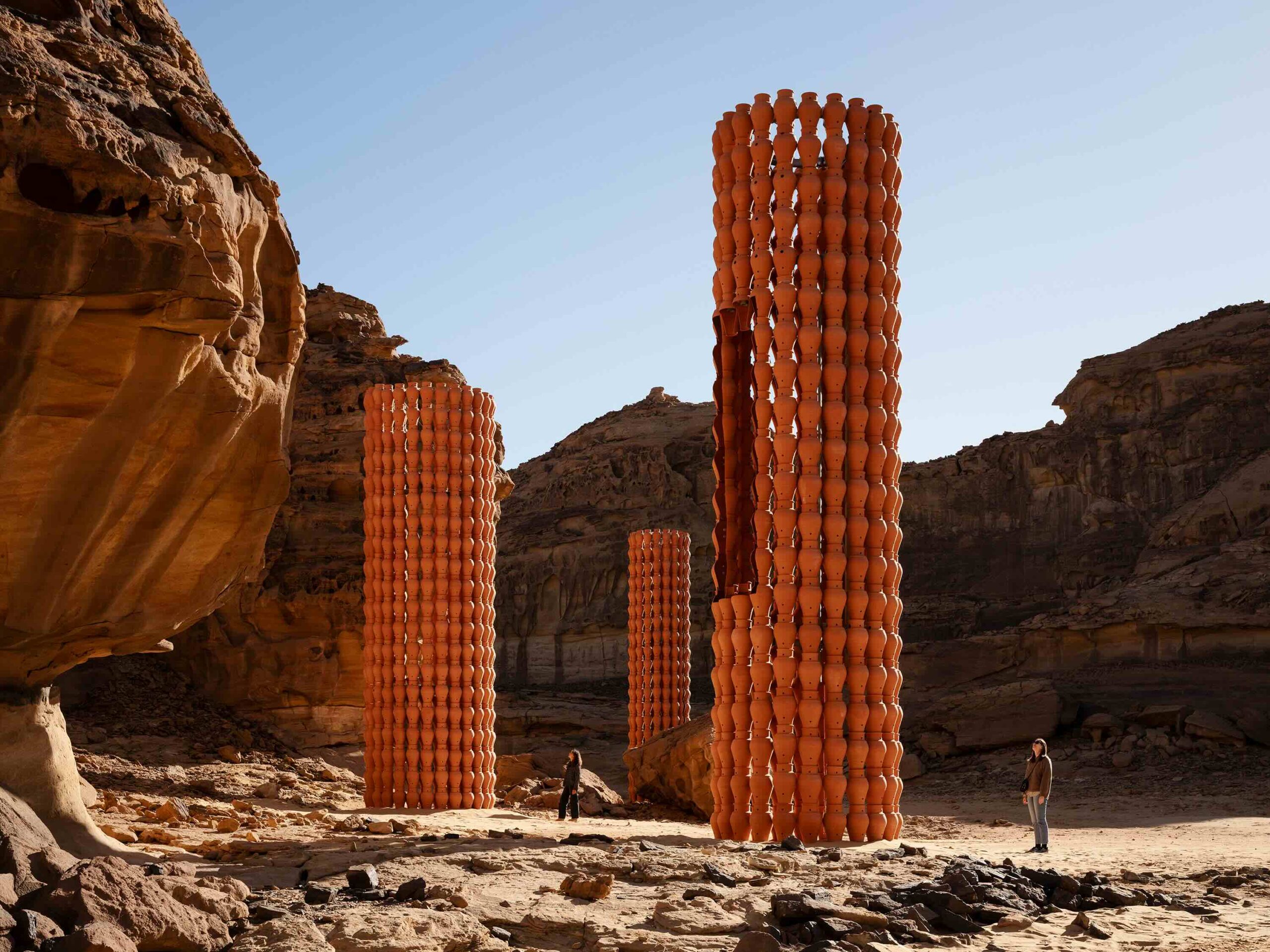
Ibrahim Mahama’s installation, also comprising vessels, features terracotta pots scattered throughout the landscape, suggesting the emergence of new ecosystems from historical relics. It references the pots used to store water in his native Ghana and how they are cracked and repaired over time, taking in elements of the landscape each time. Mahama’s artworks span across three sites of Desert X AlUla: Dung Bara – The Rider Does Not in Wadi AlFann, which sees the vessels inverted into the sand to create a void, Hanging Garden at AlManshiyah Plaza, and Gabli Din Pali – A Full Gourd Does Not Rattle; It Is Only a Partially Filled Gourd Which Rattles on Harrat Uwayrid.
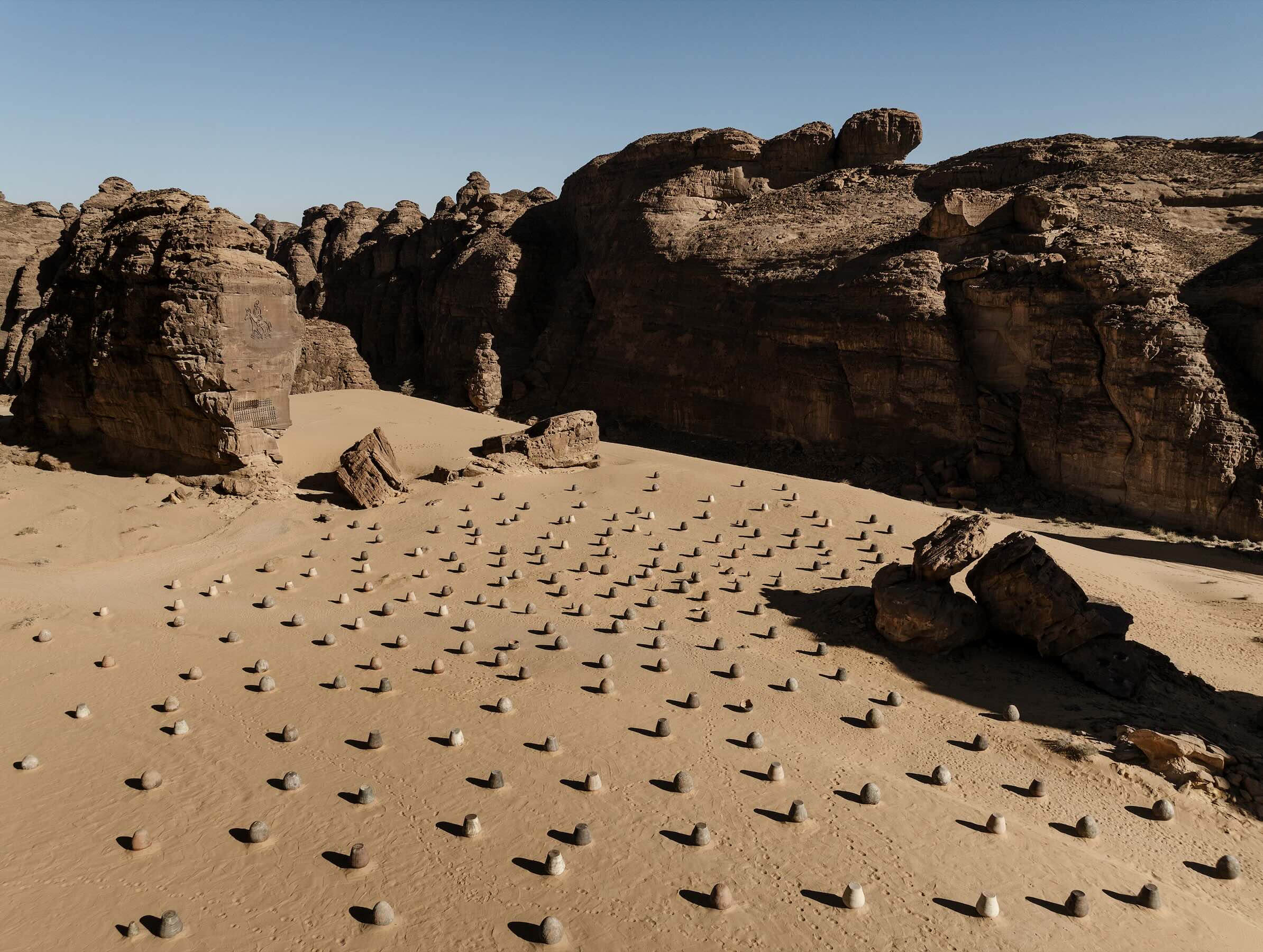
Glass bottlenecks protrude from Kader Attia’s sculptures in Whistleblower, emitting a haunting whistle when stirred by the wind. This eerie sound can also be activated by visitors blowing on the bright blue bottles which represents our ability to speak through silent elements. The artwork, inspired by a plastic bottle discarded in the desert sands, prompts viewers to contemplate the collective concern we ought to harbour for the well-being of our planet.
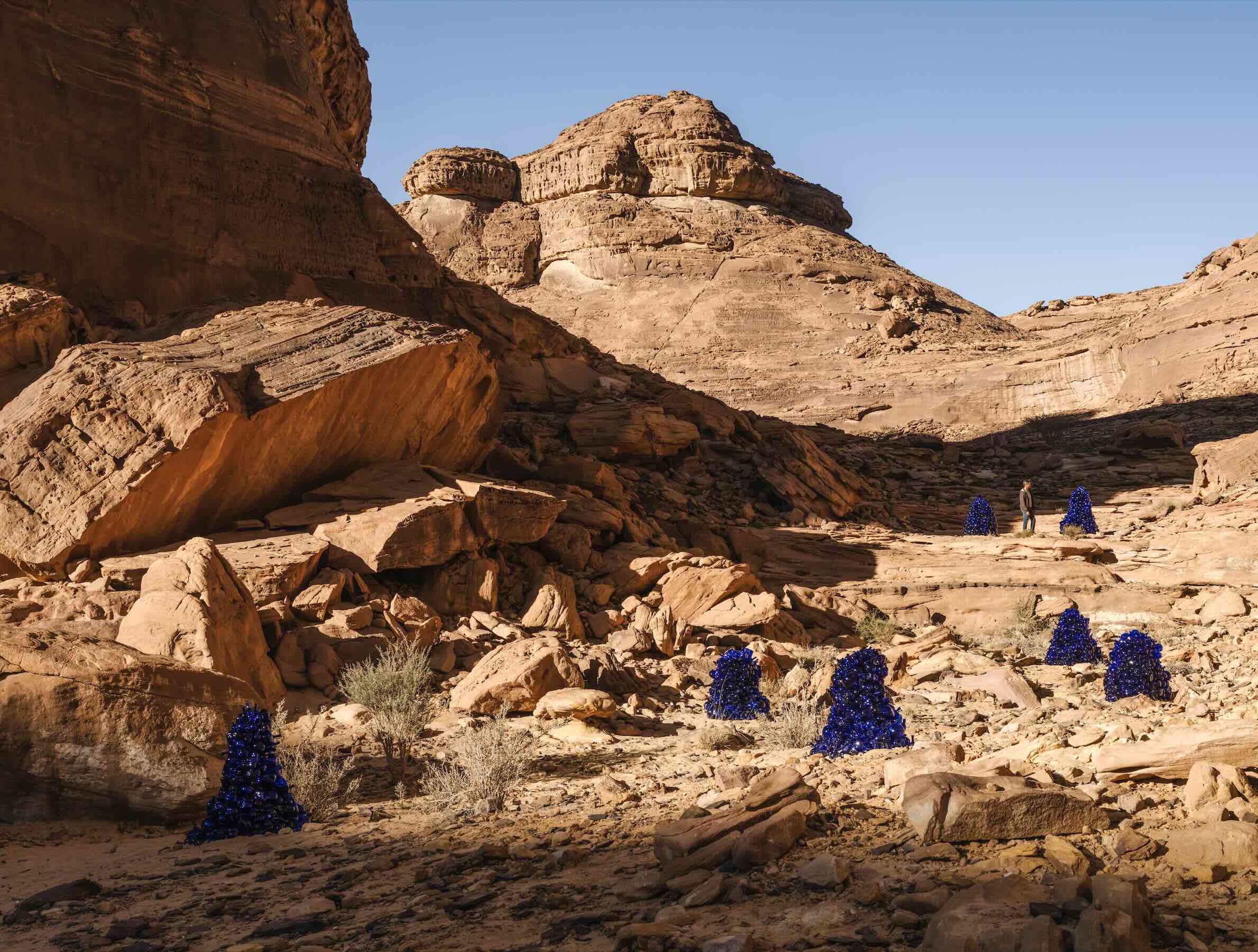
Influenced by ancient pre-Islamic beliefs of jinn dwelling in the desert, Saudi Arabian artist Filwa Nazer’s Preserving Shadows constructs an elevated walkway using steel mesh, shaping it into the petrified endoskeleton of an undulating black serpent. Guests are encouraged to traverse the work, travelling through shadows that symbolise the overcoming of darkness.
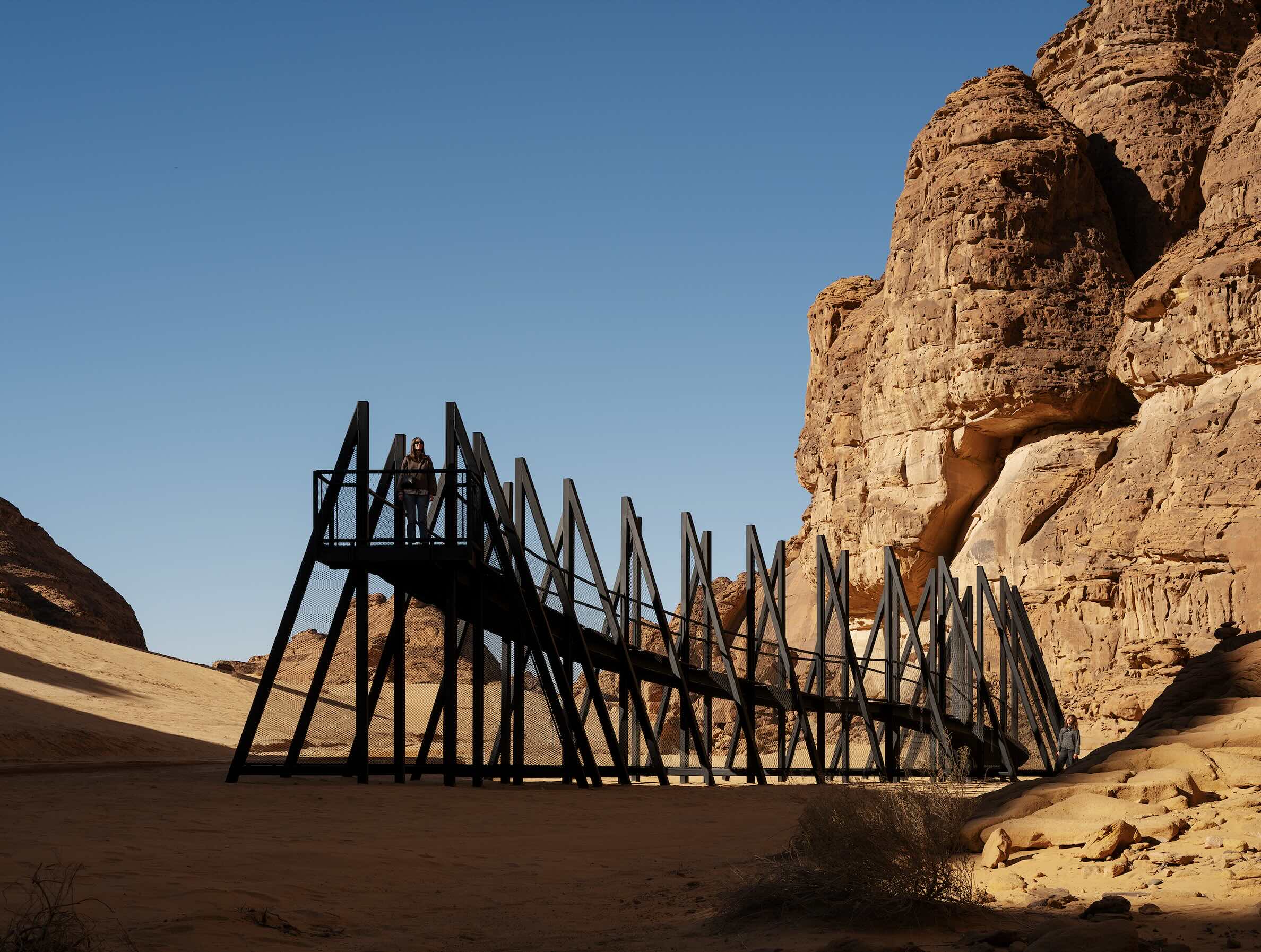
Monira Al Qadiri’s W.A.B.A.R. resonates with enigmatic objects that confounded desert dwellers in the 1930s. The artwork evokes a cosmic folklore narrative where a community in the Empty Quarter, upon encountering the pearls, speculated about their extraterrestrial origins. These black meteorites, juxtaposed against the desert hands, bring larger-than-life forms onto a dune overlooking the valley below.
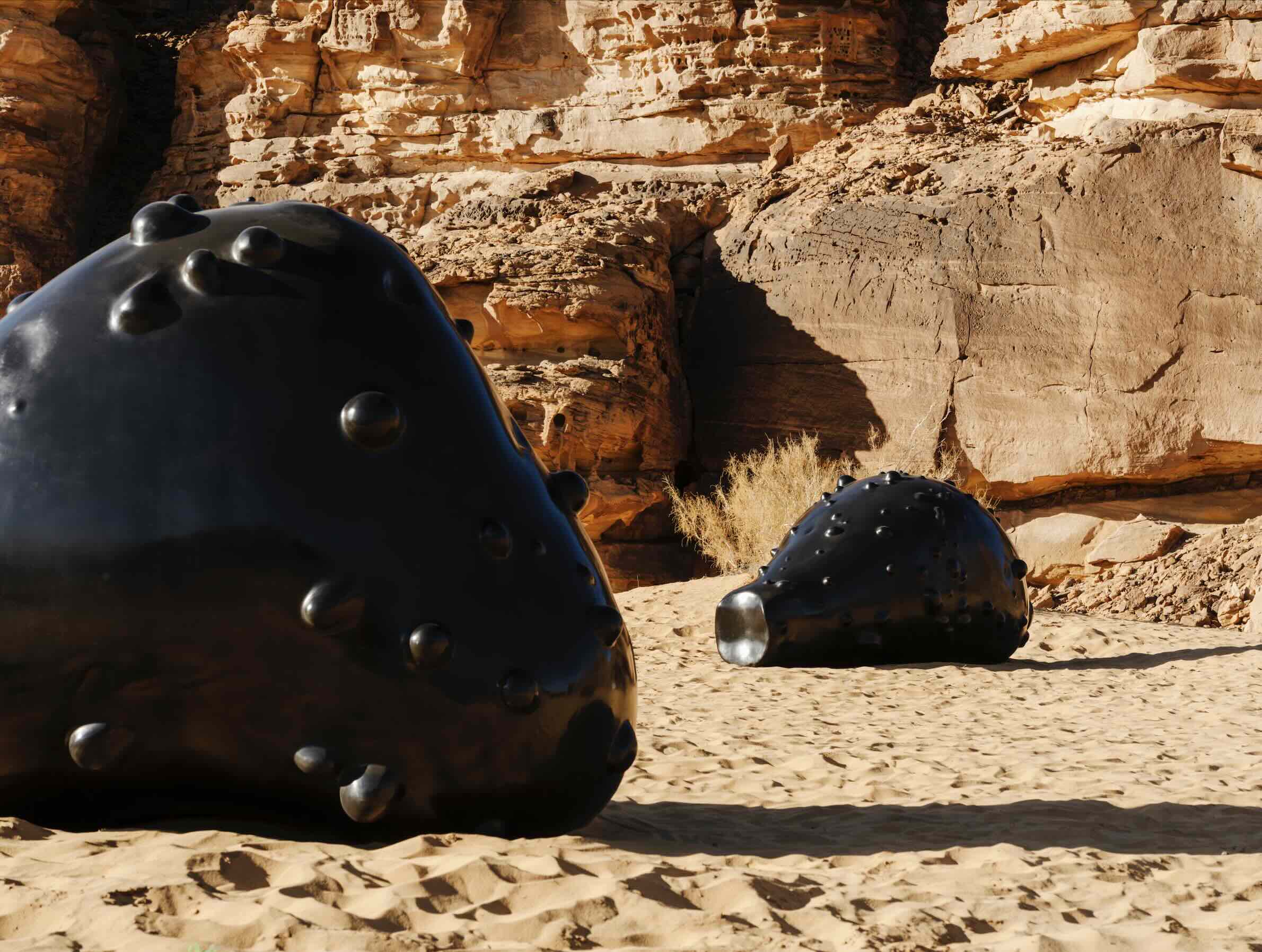
For When I Saw My Reflection by Mexica artist Bosco Sodi sourced volcanic rocks from diverse locations across the landscape. These rocks, enveloped in a shimmering gold hue, are strategically positioned within towering rock faces amidst the desert. Their presence captivates viewers’ attention, directing their gaze towards the exquisite organic shapes and natural occurrences within the rock formations. Best approached on foot as you reach the crest of a dune, the artwork changes depending on the light hitting the stones.

Rand Abdul Jabbar’s Where Myths Are Born of Mud and Desire is nestled within an alcove in the mountain valley, featuring five sculptural forms that narrate the tale of Venus. As visitors engage with each piece, they are drawn into an immersive journey through ancient perspectives, exploring the ever-evolving relationship with the celestial realm.
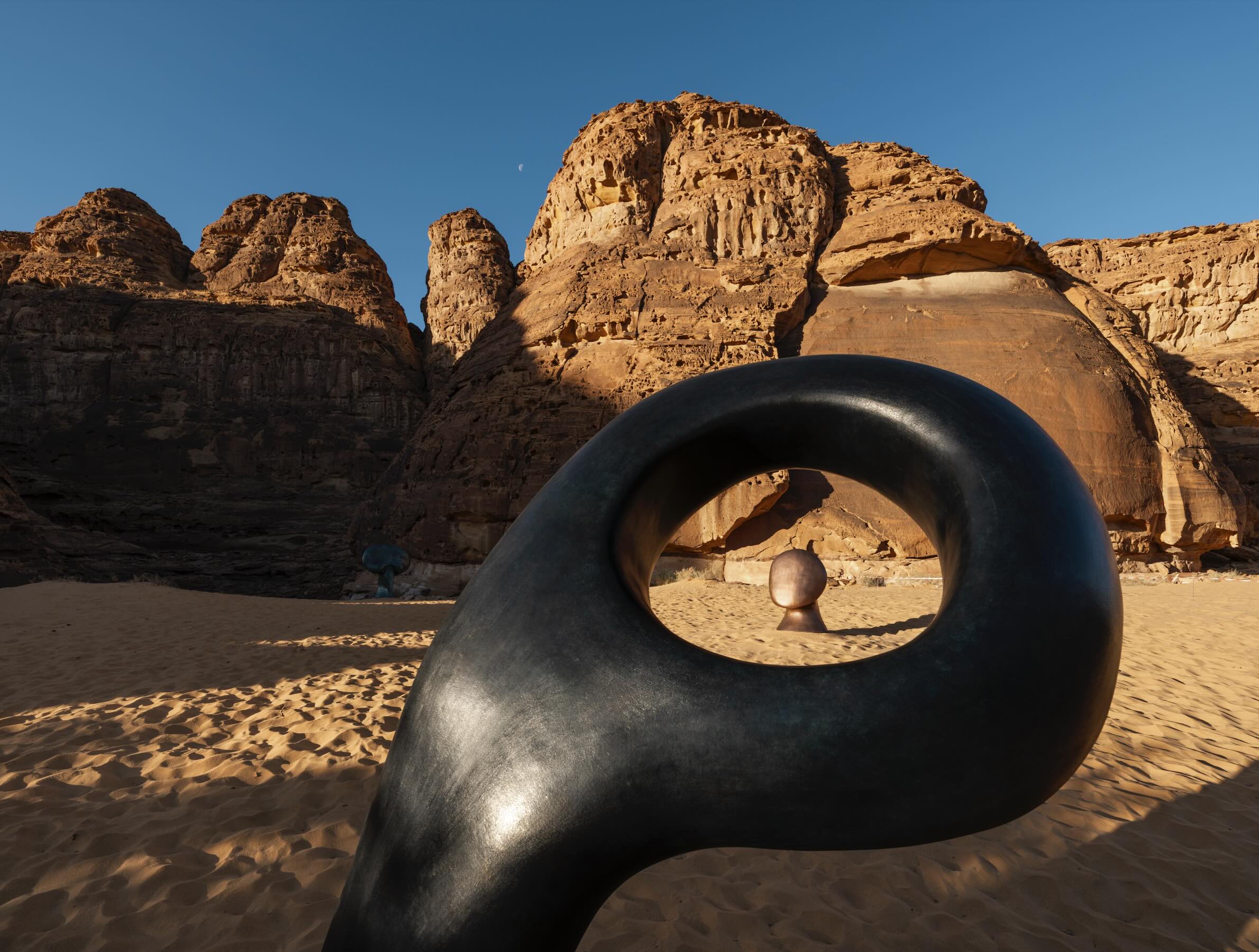
Giuseppe Penone’s The Logic of the Vegetal – Metamorphosis is likely to be the first piece you’ll encounter at Desert X AlUla. The artwork delves into the cyclical essence of existence. Fossilized tree trunks suspended between living organisms and mineral states prompt visitors to contemplate the evolutionary journey undergone over time.

Visitors are asked to refrain from photographing Tino Sehgal’s commission for Desert X AlUla. Instead, they are encouraged to interact with the piece, which involves a slight climb through a rocky ravine. The untitled piece highlights the interplay between the desert’s natural elements and human intervention through movement and sound.
Harrat Uwayrid
A rock garden in the shape of a full-sized soccer field by Saudi-Palestinian artist Ayman Yossri Daydban delineates the boundaries of a football field using white stones and rocks collected by the AlUla community from across the valley. Positioned in a secluded, rugged terrain, the football pitch carries an enigmatic and intriguing aura, prompting reflections on collective memory and the societal significance of football.

In Caline Aoun’s The Desert Has No Surface, stones sourced from the basalt plateau of Harrat al Sham undergo polishing on one side. Aoun’s artwork relies heavily on the presence of the sun, which plays a pivotal role in its activation. Through the refraction of sunlight, the stones produce moments of shimmering that serve as reflections of the transient nature of the desert landscape and the elemental forces that shaped it.

The six-kilometre route through Wadi Al Fann takes approximately three hours to navigate. The works of art not only amplify the area but aim to create new audiences for contemporary art while instigating a cross-cultural dialogue.
Desert X AlUla is a collaboration between Desert X and the Royal Commission for AlUla (RCU). The first site-responsive exhibition of its kind in Saudi Arabia, it fosters exchange between artists, curators and international and local communities, shaped by a curatorial vision that takes the desert as its inspiration. Desert X Al Ula has been curated by Maya El Khalil and Marcello Dantas, with artistic direction from Raneem Farsi and Neville Wakefield. This year’s showcase forms a cornerstone of this year’s AlUla Arts Festival.
GO: Visit www.experiencealula.com for reservations and more information.


